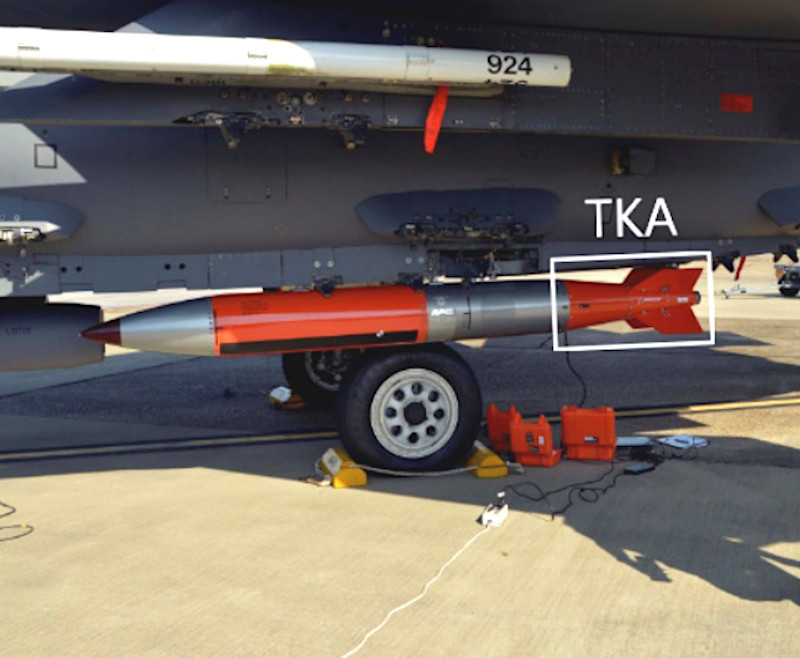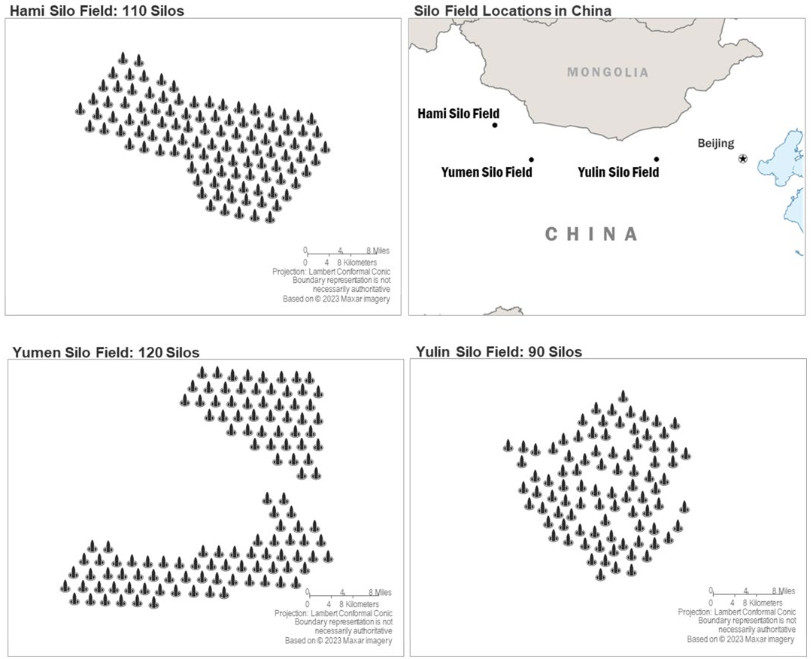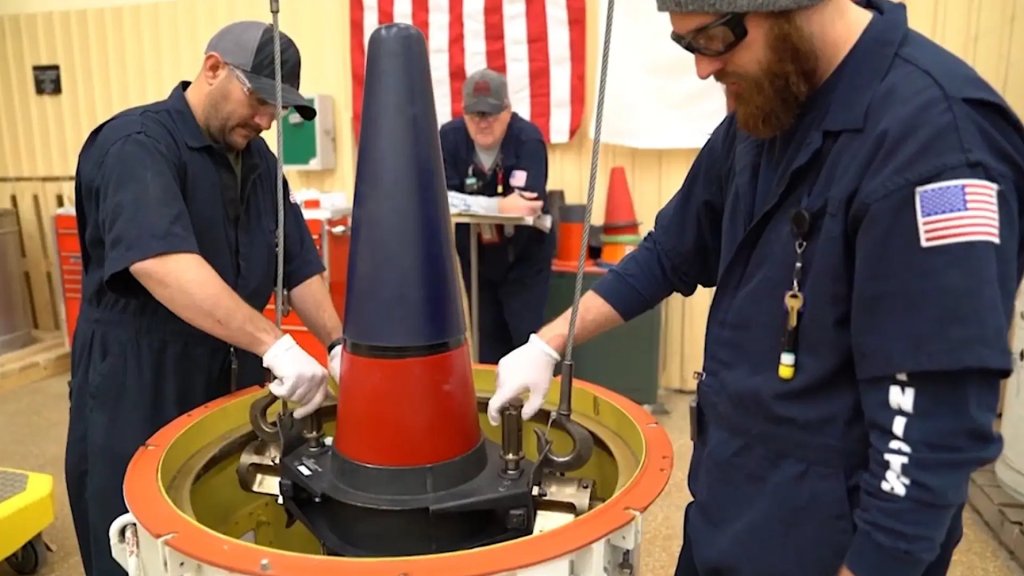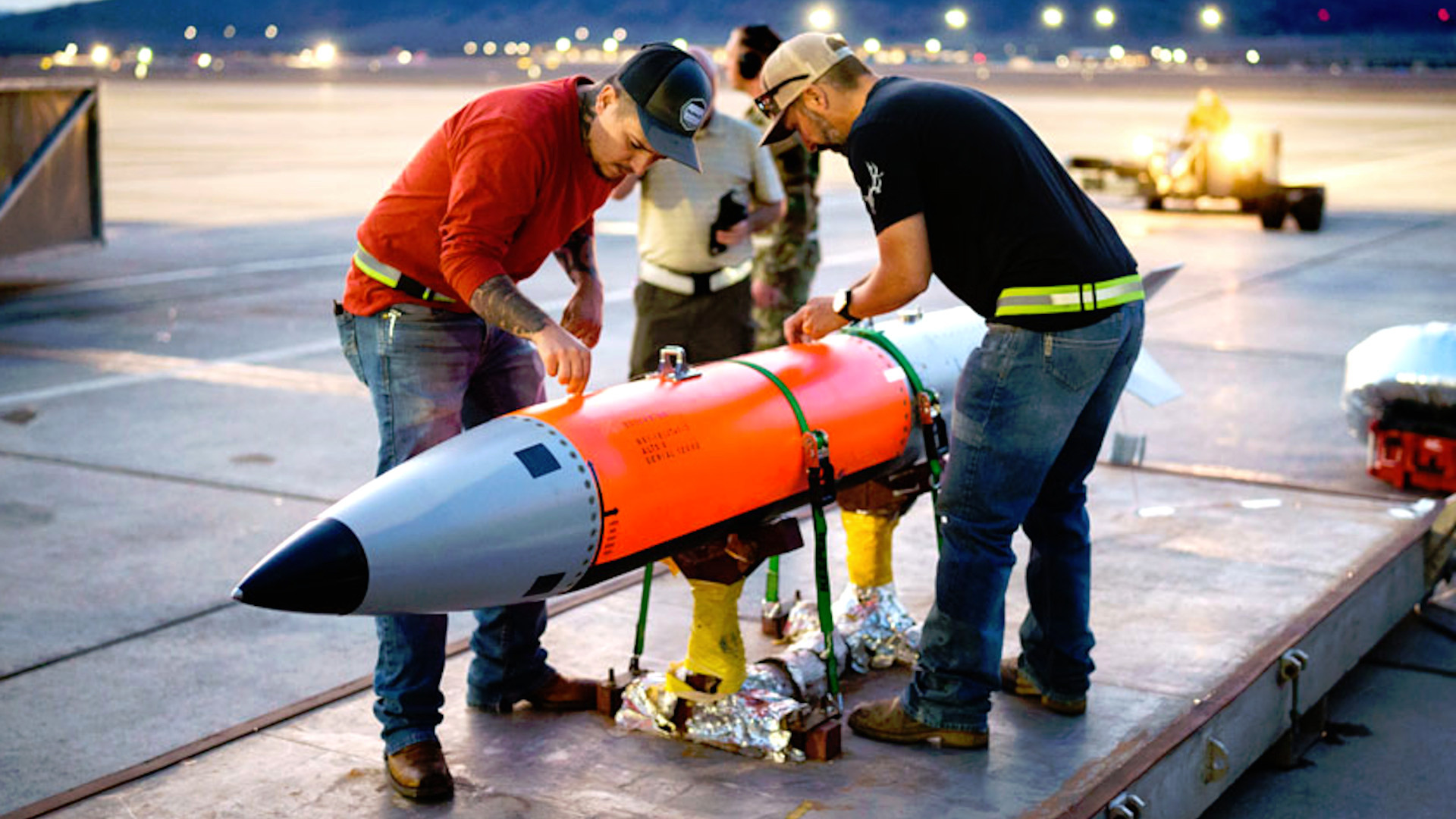More new versions of the B61 nuclear bomb could be on the horizon for the U.S. military. This is in addition to the planned B61-13 announced in 2023 and might include a true successor to the highly specialized deep-penetration B61-11 variant.
The U.S. Air Force’s Nuclear Weapon Center (AFNWC) included explicit mention of potential “future variants” separate from the B61-12, the production of which is now complete, and the previously announced B61-13 in a recent contracting notice. The B61 series is currently one of the oldest family of nuclear weapons still in operational U.S. inventory.

“The United States Air Force Nuclear Weapons Center (AFNWC) is seeking to expand its sustainment and support services for the B61 nuclear gravity bomb, currently provided via the B61-12 Tail Kit Assembly (TKA) Surveillance and Sustainment Support (BTS3) [contract],” the notice explains. “Specifically, AFNWC contemplates a contract modification … to incorporate the B61-13 and any future variants and/or modifications.”
The B61-12’s most substantial difference from previous versions of the B61 is the addition of the TKA, which includes an inertial navigation system (INS) guidance package. However, not all aircraft set to be capable of employing the B61-12 will be able to use it in its guided mode, as you can read more about here.

Otherwise, the B61-12s feature a variety of other improvements, details of which are largely classified, in addition to reusing refurbishing components from earlier B61 variants they are set to replace. The 12-foot-long and 825-pound bombs notoriously cost more than their weight in gold. The B61-13 will leverage the B61-12 design, including the TKA, but with a higher yield, something we will come back to later on.
“The B61-13 and future variants will require highly specialized engineering and logistics services to ensure their continued safety, security, and reliability,” the AFNWC’s recent contracting notice adds. “The AFNWC requires contract support that can adapt to the evolving requirements of the B61 program, and which can ensure the successful sustainment of the B61-13 and future variants.”
Though the Air Force’s contracting notice does not elaborate on what additional variants of the B61 there might be interest in, it does highlight long-standing questions about the fate of the B61-11 and plans for a true successor. The B61-11, which entered service in 1997, is significantly different in form and function from other variants with a substantially reinforced outer shell, possibly with a depleted uranium penetrating nose section, and a rocket booster at the rear to help it penetrate down to underground facilities. There are reportedly less than 100 of these bombs in the stockpile.
It had been suggested in the past that the B61-12 might be able to supplant the B61-11, as well as the much more powerful megaton class B83-1, since the new bomb could be employed much more precisely. The ability to better focus the new bomb’s blast against deeply buried targets would make up for its lack of specialized penetrating capability and lower maximum yield. The B61-12 is a so-called “dial-a-yield” nuclear weapon with multiple yield settings, the highest of which is said to be 50 kilotons. Sources differ on the maximum yield of the B61-11, but it is said to either be between 340 and 360 kilotons (identical to that of the B61-7) or be closer to 400 kilotons.

By 2018, the U.S. government had clearly abandoned this position, with the B61-12 said to be in line to replace B61-3, -4, -7, and -10 variants only at that time. In 2023, the U.S. military announced plans for the B61-13, which is expected to have a maximum yield in line with the existing B61-7, explicitly to replace a portion of those older bombs and “provide the President with additional options against certain harder and large-area military targets.”
“There is currently no life-extension program for the B61-11. The plan might be to allow it to age out,” Hans Kristensen and Matt Korda at the Federation of American Scientists (FAS) think tank in Washington, D.C., wrote after the announcement of plans for the B61-13. “Officials say the B61-13 plan does not preclude that the United States potentially decides in the future to field a new nuclear earth-penetrator to replace the B61-11. But there is no decision on this yet.”
One specific potential target, Russia’s Kosvinsky Kamen bunker, is understood to have been a key driver behind the B61-11’s development. The Kosvinsky Kamen facility is situated underneath a mountain and is part of the Russian nuclear command and control enterprise. It could also serve as a so-called “continuity of government” site to protect senior leadership from a nuclear strike or in response to some other major emergency.
Russia has at least one other bunker complex under a mountain, as well as other deeply buried sites used for nuclear command and control and other purposes. China, the U.S. military’s current chief competitor and “pacing threat,” has also been expanding its own array of subterranean facilities, including the construction of vast fields of new intercontinental ballistic missile (ICBM) silos in recent years.

Smaller countries like North Korea and Iran have also been increasingly turning to deeply buried facilities, in many cases in direct response to concerns about potential conventional strikes by the U.S. military and others.
As noted, the U.S. military has explicitly said the planned B61-13 is intended to help offer additional capacity to strike hardened targets underground, as well as larger ones on the surface. However, it is still not expected anywhere near the same kind of specialized capability found on the B61-11. It is also worth noting that it’s not entirely clear how the tail-mounted guidance package found on the B61-12 and -13 could be blended together with the rocket booster at the rear of the B61-11, and a true successor to the latter bomb might have a substantially different overall design.
The U.S. military could also have an interest in pursuing other future B61 variants offering different capabilities, including ones focused on employment with lower yield settings. The U.S. Navy has already fielded Trident II submarine-launched ballistic missiles with a dedicated lower-yield W76-2 warhead. Advocates say this offers valuable additional flexibility for managing escalation in any future nuclear scenario, but critics have questioned the real utility of such weapons, as you can read more about here.

New “guidance requires that all plans for responding to limited nuclear attack or significant, high-consequence non-nuclear attack that has strategic-level effect [must] include an associated concept for favorably managing escalation, including reducing the likelihood of a large-scale nuclear attack against the United States or its allies and partners,” according to an unclassified report on the current Nuclear Employment Strategy of the United States that the Pentagon released last November. “This escalation management is increasingly important as the operating environment becomes more complex and creates the possibility of pathways for conflict escalation that may not be well understood or easy to predict.”
The Pentagon’s Defense Science Board (DSB) also announced last November that it had initiated a new study into the “Nuclear Survivability of the Joint Force.” Russia’s threats of the use of nuclear weapons around the ongoing conflict in Ukraine, as well as North Korea’s nuclear program and Iranian developments were cited as key drivers.
“In the event of an adversary’s use of a nuclear weapon, particularly if the weapon is used against a U.S. ally, the U.S. military may be called upon to respond and contribute to the defeat of an adversary,” according to an unclassified DSB memo about the new nuclear operations study. “Alternatively, the United States may already be embroiled in a conventional conflict that escalates to nuclear use, putting the warfighter at risk.”
“Continuing to operate after an adversary uses a nuclear weapon will present challenges for the Department of Defense (DoD), beginning with the survivability of U.S. forces, including both personnel and equipment,” the DSB memo added. “As the DoD undertakes several efforts to modernize and/or acquire new nuclear and non-nuclear capabilities, and as the DoD plans and exercises for major contingencies against nuclear-armed adversaries, consideration must be given to the full range of nuclear survivability options.”
Other capabilities increasingly found on modern conventional bombs, such as range-extending wing kits, might find their way onto future versions of the B61, too.
It remains to be seen how the already long-serving B61 family may further evolve in response to these and other operational and geopolitical realities. The recent Air Force contracting notice is the latest hint that more versions, including a real replacement for the B61-11, could be coming down the line.
Contact the author: joe@twz.com
